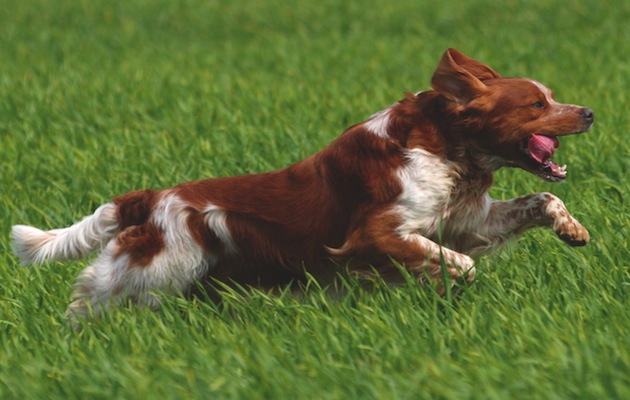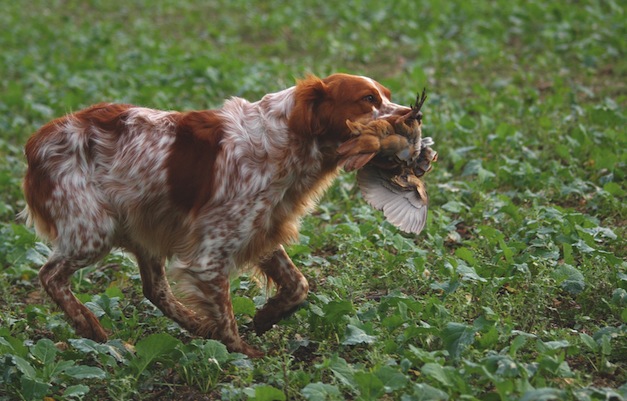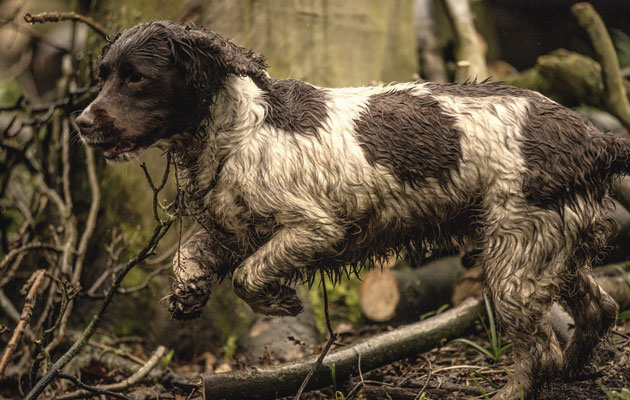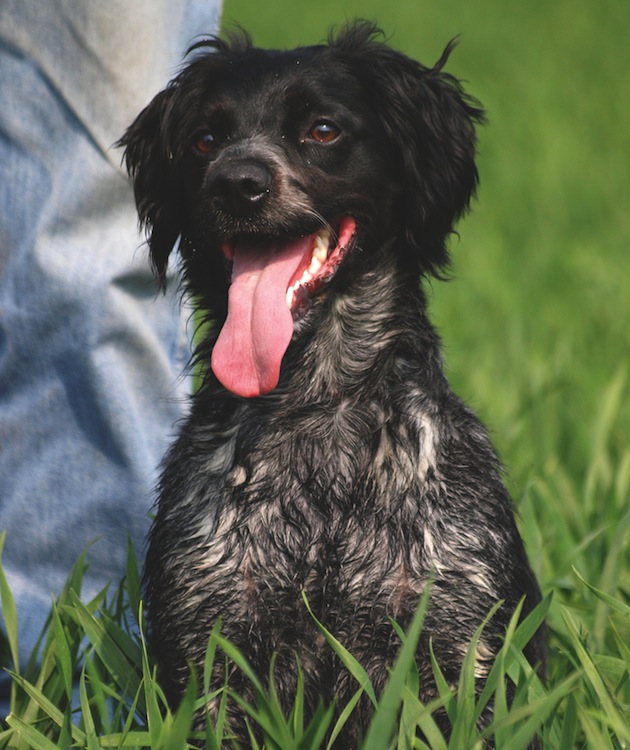Both springer and cocker spaniels are capable of doing a useful day’s work out in the field. Both are biddable.…
Win CENS ProFlex DX5 earplugs worth £1,149 – enter here
Rule Brittany

France and England may be separated only by a narrow stretch of water, but the difference in our shooting culture could hardly be more different. Shooting is hugely popular throughout France, but the French word used to describe it — la chasse — neatly sums up our continental cousins’ approach. It is very much a case of the chase. Most shooting is communal, with the band of chasseurs all local people, while a typical French shoot relies almost entirely on wild game. Bags are small and, because of this, the sport is sustainable. The nature of the shooting also demands a different type of gundog. I’ve seen a wide variety of dogs on French shooting days, but the Brittany is the most popular.
In many ways, the Brittany is the French counterpart of the English springer. They are as popular as pets as they are as shooting dogs, and the majority of working Brittanys are also pets. We used to call it the Brittany spaniel, as it certainly looks like one, but the word spaniel was dropped some years ago, a reminder that this is a genuine HPR, albeit the smallest of them. The French, however, still call it the l’épagneul Breton, which (would you believe) translates literally as the Brittany spaniel. However, just to confuse things, the French use our word spaniel, not épagneul, when talking about cockers or springers.
According to the breed’s history, the Brittany is the result of local French spaniels mating with pointers and setters, the latter owned by visiting sportsmen from England. In Victorian times, English gentlemen would travel to Brittany to enjoy the partridge and woodcock shooting, so they took their dogs with them. No doubt there were both deliberate and accidental crosses, but the resulting offspring proved to be fine hunting dogs.
The mixed ancestry goes some way to explaining the variety of colours found in the modern Brittany: orange and white is the most common, but liver and white, black and white, tricolour, or roan of any of these colours are also to be seen. Brittanys are typically heavily marked, with the tricolours being particularly eye-catching. Traditionally, they are always docked very short and some dogs are born without tails, something I never believed until I met a few.
Favourites with falconers
It wouldn’t be unfair to say that the Brittany is an Hpr, rather than an HPR, as its real strength is hunting, then pointing, but not retrieving. Though I’ve seen dogs that were outstanding retrievers, I’ve also met some that had no interest in retrieving at all.
These Brittanys might perhaps best be classified as an HP, rather than HPR. The passion for hunting and the reluctance to retrieve makes the Brittany a favourite with falconers. I wouldn’t be surprised if more Brittanys are worked with hawks and falcons in the UK than are used for shooting.
The Brittany’s rarity in the British shooting field is a pity, as this is an entertaining dog to shoot over. However, it’s not the sort of dog you would ever train to sit at a peg, and most range too widely to be the keeper’s favourite in the beating line, but for the roughshooter it is a great companion.
The pointing instinct is strong
A good Brittany is blisteringly fast and almost inexhaustible, so if you have a lot of ground to cover and birds are few, this could be the ideal dog for you. Enthusiasts insist there’s no better dog for hunting woodcock in woodland, a sport they are used for in their native France.
The pointing instinct is strong, so if your dog finds a bird a couple of fields away, it’s likely to hold it for you until you manage to catch up with it. Muzzle-loader enthusiasts like Brittanys as they will wait on point while the gun is loaded and primed, invariably a slow business.
Compact size
My experience of the French shooting field suggests that many Frenchmen neglect their dog training. I’ve certainly seen Brittanys hunting so far from the accompanying chasseurs that the latter are unlikely ever to catch up with their dog, even when it is on point. If, however, they do get a successful shot, they are usually just as happy to retrieve it themselves as expecting their dog to do it for them.
One of the great attractions of the Brittany is its compact size. Dogs should be just 19in-20in, bitches a fraction smaller, making them midway between an English springer and a cocker. If you fancy an HPR but haven’t the room for a German pointer, this is a real merit.
I have a French hunting book that discusses the Brittany, suggesting that it’s the ideal dog for the weekend hunter. It is happy to live in the house, doesn’t take up much space in the car and will hunt happily all day.
One other overlooked plus point of the Brittany is the fact it remains a genuine dual-purpose gundog and there are several full champions (show champions with a field-trial award). Leading HPR trainer Rory Major has made- up two Brittany dual champions — the rare combination of a show champion and a field trial champion — demonstrating that the show standard remains the perfect blueprint for a working dog. However, the Brittany remains a rarity as a shooting dog in the UK, so perhaps we are neglecting one of Europe’s best sporting dogs?
Related Articles
Get the latest news delivered direct to your door
Subscribe to Shooting Times & Country
Discover the ultimate companion for field sports enthusiasts with Shooting Times & Country Magazine, the UK’s leading weekly publication that has been at the forefront of shooting culture since 1882. Subscribers gain access to expert tips, comprehensive gear reviews, seasonal advice and a vibrant community of like-minded shooters.
Save on shop price when you subscribe with weekly issues featuring in-depth articles on gundog training, exclusive member offers and access to the digital back issue library. A Shooting Times & Country subscription is more than a magazine, don’t just read about the countryside; immerse yourself in its most authoritative and engaging publication.










